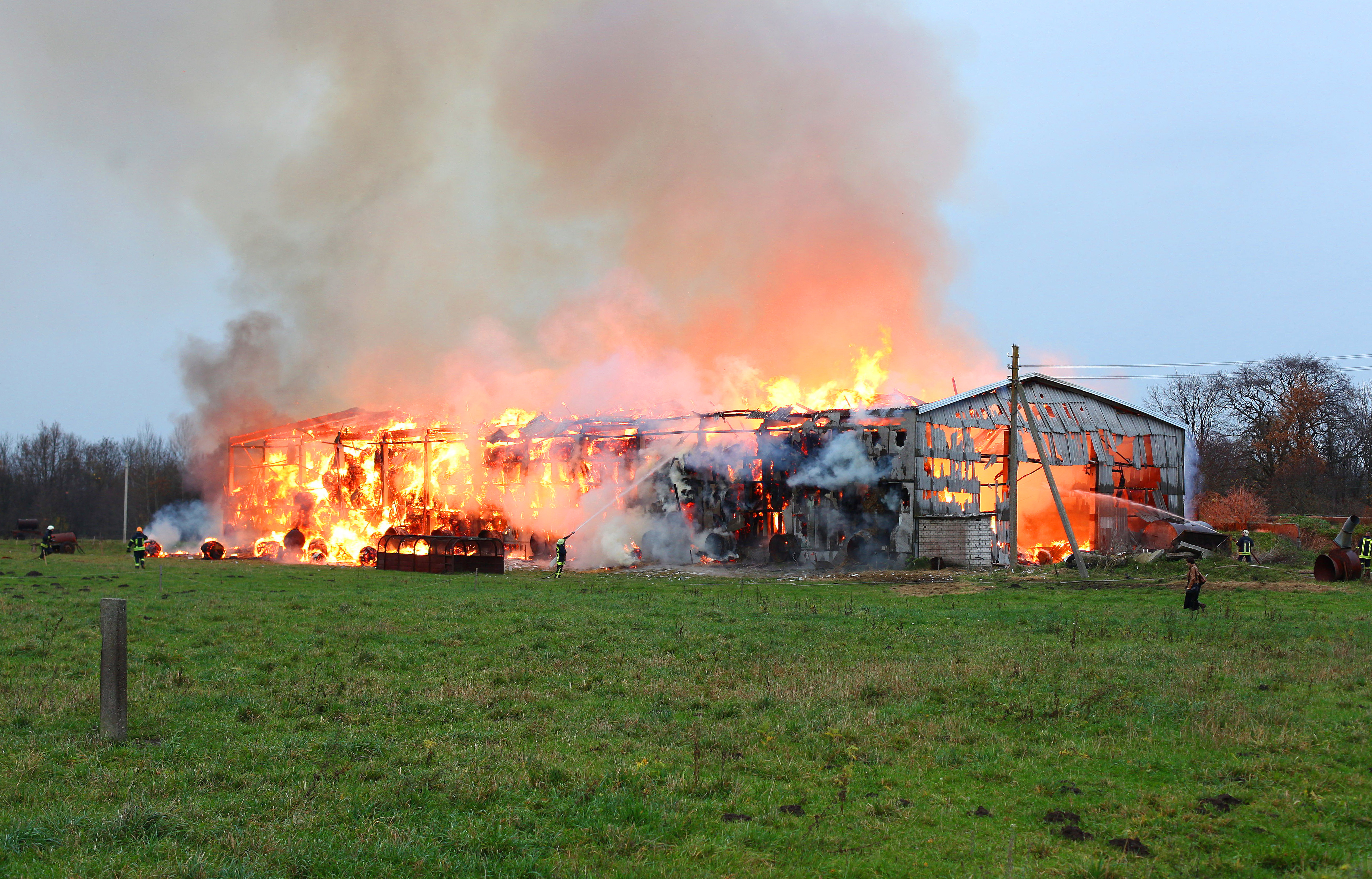



Barn fires: chickens make up 95 percent of all animal deaths caused by fires
USA - Today, the Animal Welfare Institute (AWI) released a first-of-its-kind report highlighting the more than 2.7 million US farm animals who perished in potentially preventable barn fires from 2013 to 2017
The report, issued in advance of National Fire Prevention Week (7-13 October) offers recommendations for barn fire prevention and improved fire safety to better protect farm animals.
Currently, there are no laws or regulations in the United States designed to protect farm animals from barn fires. Farm animals are not covered under the federal Animal Welfare Act and receive considerably less protection than other species of confined animals, such as those living in laboratories or zoos.
Because a massive number of farm animals live on industrial farms, the need for emergency planning and fire protection is critical to prevent this horrific and staggering loss of life.
“As we’ve seen recently with the pigs and chickens left to drown in confinement sheds during Hurricane Florence, lack of preparation for natural disasters and other emergencies can cost millions of farm animals their lives,” said Dena Jones, director of AWI’s farm animal programme. “Farm animals should not have to endure the unimaginable pain and suffering that comes with being trapped inside a burning barn, especially when there are so many options available to make barns safer.”
AWI collected information on barn fires from media reports published between 2013 and 2017. Because laws and regulations vary by state, and municipalities are not generally required to report barn fires and livestock losses that occur within their boundaries, the number of fires and animal deaths likely exceeds the report total.
Among the report’s major findings:
- 326 barn fires killed at least 2,763,924 farm animals in the United States.
- Chickens represented 95 percent of all farm animals who died in barn fires.
- The main cause (or suspected cause) of barn fires was malfunctioning or misused heating devices, accounting for nearly half of all barn fires.
- The majority of barn fires occurred in colder weather, with nearly three times as many fires occurring during winter compared to summer (34.7 percent of the total occurring in winter vs. 13.5 percent in summer).
- Barn fires happened most often in the Upper Midwest and Northeast. The five states with the highest number of barn fires were New York, Pennsylvania, Michigan, Wisconsin and Minnesota.
- Barn fires can devastate any size farm - from the smallest backyard operation to the largest industrial complex. The deadliest fire during the report period occurred last year in Indiana, when 1 million chickens died at Hi-Grade Egg Producers.
Agricultural trade associations and individual farming operations have a responsibility to animals raised for food and to consumers to prioritise animal welfare, and that should include protecting farm animals from barn fires. At any given time, hundreds of thousands of animals may be confined in an industrial facility. Facility operators, therefore, should use every fire deterrent available to prevent farm animals from being burned alive in a matter of hours or even minutes.
Among the report’s recommendations: Farm operators should install effective fire prevention equipment and request that local fire departments inspect their barns annually. Local government, industry and third-party certification programmes need to adopt the National Fire Prevention Association’s safety requirements for both animals and humans in animal housing facilities.
“No farm animal deserves to burn to death in a fire that could have been prevented,” said Jones. “AWI hopes that this report will assist the animal agriculture industry in making decisions to better protect farm animals from the tragedy of barn fires.”
As reported by the Animal Welfare Institute








